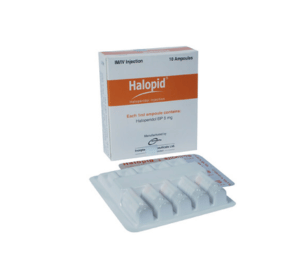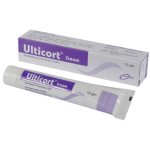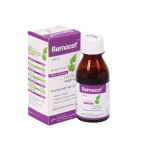Halopid(Haloperidole)

Therapeutic Group: Drugs of Nervous System
Presentation
Halopid 5 tablet : Each tablet contains Haloperidol BP 5 mg.
Halopid Injection : Each 1ml ampoule contains Haloperidol BP 5 mg.
Description
Haloperidol is a butyropherone derivative with antipsychotic properties that has been considered particularly effective in the management of hyperactivity, agitation and mania. Haloperidol is an effective neuroleptic and also possesses antiemetic properties. It may also exhibit hypothermic and anorexiant effects and potentiate the action of barbiturates, general anesthetics and other CNS depressant drugs. Haloperidol is a quick acting substance and has a duration of action of about 12 hours after one single administration. The optimum daily therapy consists of 2 administrations.
Indications
1. In Low Doses
nervousness, anxiety states and associated psychic disorders as irritability gressiveness, psychic lability and insomnia
functional disorders caused by anxiety states such as trembling, thorax oppression, gastrointestinal hypermotility and digestive disorders
tics and stuttering
nausea and vomiting
2. In Higher Doses
psychomotor agitation in mania, dementia, acute and chronic schizophrenia, alcoholism
delusions and hallucinations in acute and chronic schizophrenia, acute confusion
choreatic movements
behaviour and character disorders in children
tics and stuttering
vomiting
Dosage & Administration
Initial dose for adults
Patients who remain severely disturbed or inadequately controlled may require dose adjustment. Daily dose upto 100 mg may be necessary in some cases to achieve optimal response.
Children
A suggested dose for the management of behaviour disorders in disturbed and schizophrenic children is 50 microgram per kg body weight.
Side Effects
Haloperidol is a safe neuroleptic. Headache, vertigo, insomnia are the more common side effects encountered. Drowsiness, lethargy, stupor, confusion, restlessness, agitation, anxiety, euphoria and exacerbation of psychotic symptoms including hallucinations also may occur. Dry mouth, blurred vision, urinary retention, heartburn, nausea, vomiting, anorexia, diarrhea and hypersalivation have also been reported.
Precautions
Haloperidol may lower the convulsive threshold and has been reported to trigger seizures in previously controlled known epileptics. When instituting haloperidol therapy in these patients, adequate anticonvulsant medication should be maintained concomitantly. As with other antipsychotic agents, haloperidol should be administered cautiously to patients with severe impairment of liver or kidney function and to patients with known allergies or history of allergies to other neuroleptic drugs. Caution is also advised in patients with pheochromocytoma and conditions predisposing to epilepsy such as alcohol withdrawal and brain damage. Since the drug may have a possible potentiating effect on potent analgesics or hypnotics, caution is recommended when prescribing it to patients who are regularly treated with such drugs.
Use in Pregnancy & Lactation
For use in pregnancy and lactation has not been established; do not administer to women of childbearing potential or nursing mothers unless, in the opinion of the physician, the expected benefits of the drug outweigh the potential hazard to the fetus or child. Haloperidol is excreted in breast milk.
Drug Interaction
Haloperidol has been reported to interfere with the anticoagulant properties of phenindione in an isolated case and the possibility should be kept in mind of a similar effect occurring when haloperidol is used with other anticoagulants. Haloperidol may antagonize the action of epinephrine and other sympathomimetic agents and reverse the blood pressure-lowering effects of adrenergic-blocking agents, such as guanethidine. Enhanced CNS effects may occur when haloperidol is used in combination with methyldopa. Haloperidol inhibits the metabolization of tricyclic antidepressants, thereby increasing plasma levels of these drugs. This may result in increased tricyclic antidepressant toxicity (anticholinergic effects, cardiovascular toxicity, lowering of seizure threshold). Haloperidol may impair the antiparkinson effects of levodopa. If an antiparkinson agent is used concomitantly with haloperidol, both drugs should not be discontinued simultaneously, since extrapyramidal symptoms may occur due to the slower excretion rate of haloperidol.
Over Dose
In general, the symptoms of overdosage would be an exaggeration of known pharmacologic effects and adverse reactions, the most prominent of which would be: severe extrapyramidal reactions, hypotension or sedation.The patient would appear comatose with respiratory depression and hypotension which could be severe enough to produce a shock-like state.
Commercial Pack
Halopid 5 : Each box contains 10 blister strips of 10 tablets.
Halopid Injection : Each box contains 10 ampoules of 1 ml.



